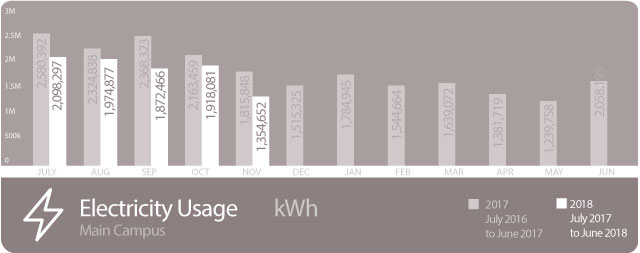
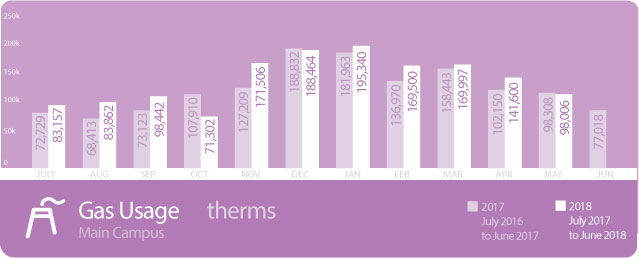
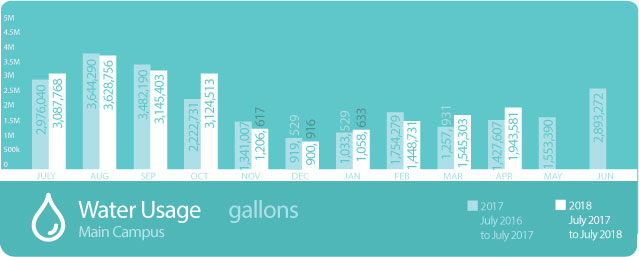
Reducing environmental impact takes both an institutional and individual commitment. Choose to make a difference. Learn the small steps to take to make a big difference and reduce your environmental footprint. Take action today!
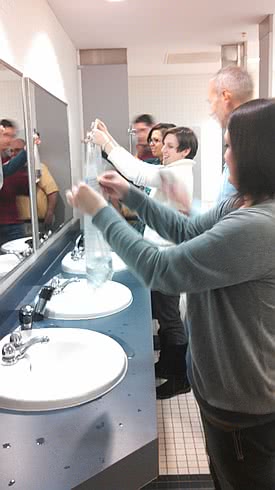 In March 2015, Harper College hosted a Water Audit training session, sponsored by
the Illinois Green Economy Network (IGEN) and the Illinois Sustainable Technology
Center (ISTC). Participants learned about water usage on college campuses and left
equipped with the resources to be able to conduct a water audit on their own campuses.
This program was made possible in part by the One Billion Gallon Challenge, an initiative
of the ISTC that seeks to conserve one billion gallons of water in Illinois through
education and water efficiency programs. The ISTC partnered with IGEN to start the
program entitled Water Use and Conservation on Illinois College Campuses: The Ripple Effect, and brought the training program to three colleges in Illinois, Lewis and Clark
Community College, University of Illinois at Chicago, and Harper College.
In March 2015, Harper College hosted a Water Audit training session, sponsored by
the Illinois Green Economy Network (IGEN) and the Illinois Sustainable Technology
Center (ISTC). Participants learned about water usage on college campuses and left
equipped with the resources to be able to conduct a water audit on their own campuses.
This program was made possible in part by the One Billion Gallon Challenge, an initiative
of the ISTC that seeks to conserve one billion gallons of water in Illinois through
education and water efficiency programs. The ISTC partnered with IGEN to start the
program entitled Water Use and Conservation on Illinois College Campuses: The Ripple Effect, and brought the training program to three colleges in Illinois, Lewis and Clark
Community College, University of Illinois at Chicago, and Harper College.
On March 3 & 4, 2015, two water efficiency experts from Water Management, Inc. walked participants through the water audit process, explaining and demonstrating how to first, determine how much water the campus is using, and then how to find water reduction opportunities. The mornings of the workshop were overflowing with information about all the different types of equipment that use water on campus. The afternoons were spent touring Harper’s campus and getting hands-on audit experience, and getting a behind the scenes look at equipment on campus including boilers, chillers, kitchen equipment, laboratories and pools. Participants also learned how to use common objects to test flow rates of faucets and toilets (pictured above), such as plastic bags, buckets and even bike pumps!
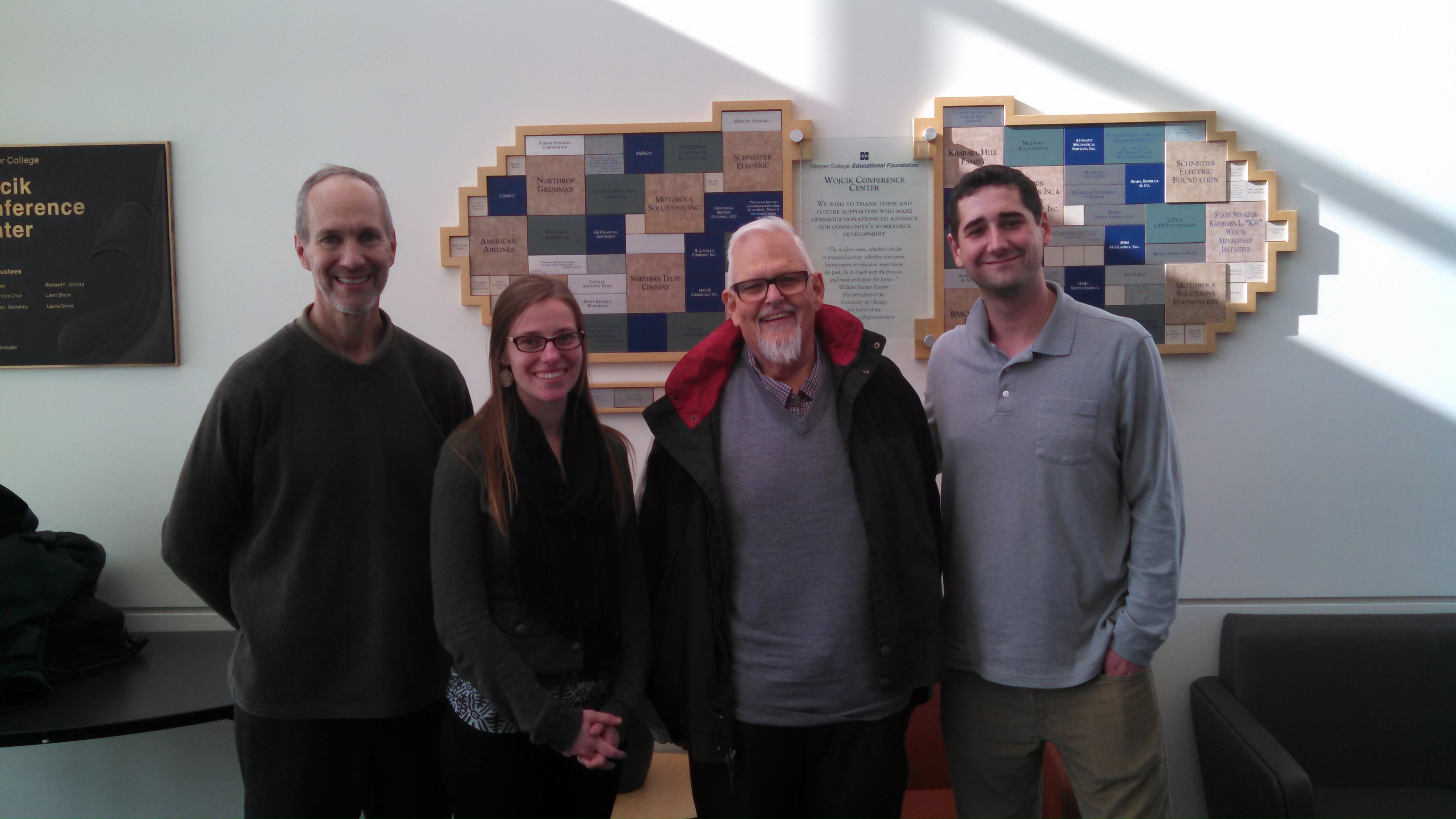 After two busy days of learning and collecting data, the Water Management team finalized
a water balance for Harper College, a spreadsheet detailing the breakdown of campus
water usage. This data will be valuable to the college moving forward, as the data
can be continually updated to reflect changes on campus and provide an accurate picture
of how much and where water is being used on campus. Knowing how much water the campus
is using is the first step toward increasing water use efficiency. From this water
balance, the college will be able to pinpoint areas to start reducing water usage
on campus – ultimately increasing water efficiency, saving money and doing our part
to help conserve one billion gallons.
After two busy days of learning and collecting data, the Water Management team finalized
a water balance for Harper College, a spreadsheet detailing the breakdown of campus
water usage. This data will be valuable to the college moving forward, as the data
can be continually updated to reflect changes on campus and provide an accurate picture
of how much and where water is being used on campus. Knowing how much water the campus
is using is the first step toward increasing water use efficiency. From this water
balance, the college will be able to pinpoint areas to start reducing water usage
on campus – ultimately increasing water efficiency, saving money and doing our part
to help conserve one billion gallons.
Pictured (left to right): Russ Horner, Water Management; Amy Bandman, Sustainability Coordinator; Bill Hoffman, Water Management; Nate Keener, Lewis and Clark Community College.
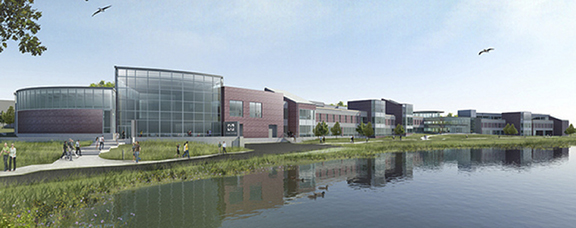
All new construction and renovation projects at Harper will be built to LEED Silver standards. Many of the features of our new campus buildings contribute to overall energy efficiency.
One of the "green" features of our new buildings is that they employ daylight harvesting, a strategy designed to use natural light to reduce the use of electric lighting and save energy, yet maintain visual comfort. Windows have been incorporated into both buildings to take maximum advantage of natural light. A daylight harvesting sensor is pictured to the right.
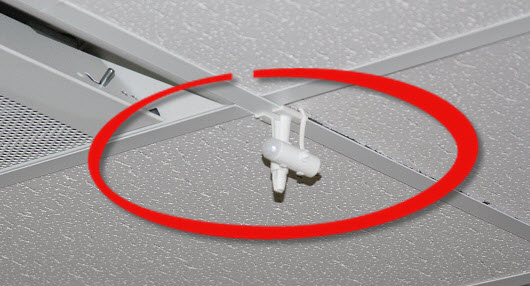 Additionally, the basement of the Building D addition houses a regional chiller plant
that will cool 5 buildings on campus, replacing the individual chillers that were
in each of those buildings. Having one central chiller plant improves overall energy
efficiency on campus, reduces maintenance and improves indoor space comfort. The chillers are controlled by one central
automated system that sets standard high and low temperatures.
Additionally, the basement of the Building D addition houses a regional chiller plant
that will cool 5 buildings on campus, replacing the individual chillers that were
in each of those buildings. Having one central chiller plant improves overall energy
efficiency on campus, reduces maintenance and improves indoor space comfort. The chillers are controlled by one central
automated system that sets standard high and low temperatures.
Occupancy Sensors have been installed in most buildings across campus, automatically turning off lights when an area is unoccupied.
Double Pane Windows are replacing single pane windows to increase energy efficiency of campus buildings.
LED Lighting is replacing Incandescent lights to save energy.
Physical Plant increased efficiency in preventative maintenance and operation of heating and cooling equipment.
LEED Silver Standards All new construction and renovation projects are being completed to LEED Silver standards.
Renewable Energy 15% of the energy used on campus is purchased from renewable sources.